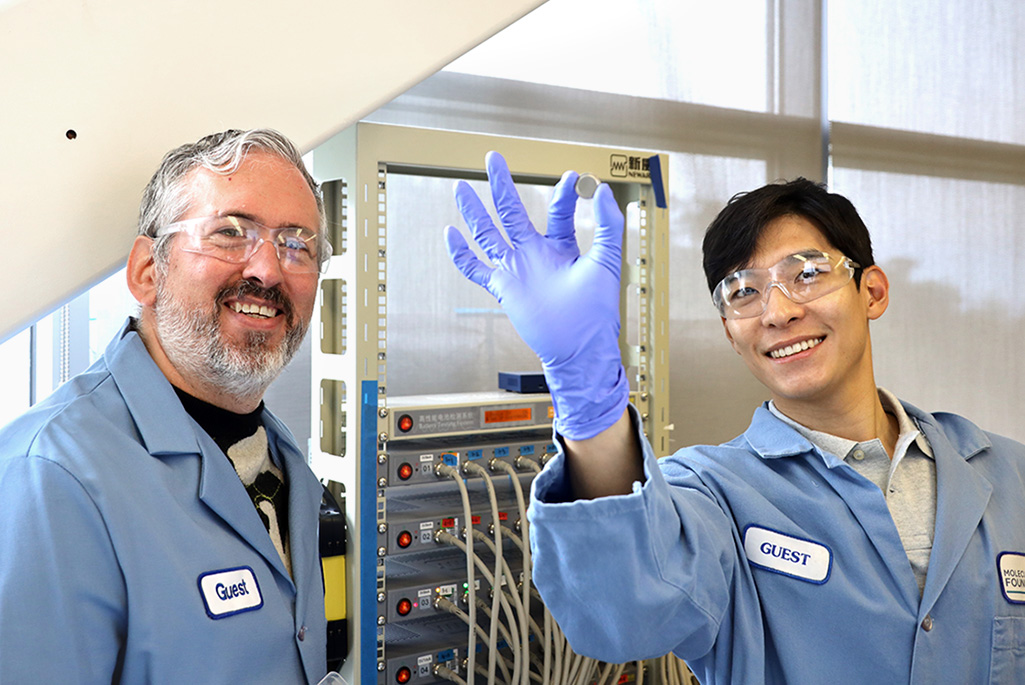When it comes to figuring out why electric aircraft batteries lose power over time, one typically wouldn’t think to turn to a decades-old approach biologists use to study the structure and function of components in living organisms. However, it turns out that omics, a field that helped scientists unravel the secrets of the human genome, could also soon play a key role in making carbon-free air travel a reality.
In a new study in the journal Joule, a team of researchers led by the Department of Energy’s Lawrence Berkeley National Laboratory (Berkeley Lab) used omics techniques to study the intricate interactions within the anode, cathode, and electrolyte of electric aircraft batteries. One of the most significant findings was the discovery that certain salts mixed into the battery electrolyte formed a protective coating on cathode particles, making them far more resistant to corrosion, thereby enhancing battery life.
The research team, which includes scientists from the University of California, Berkeley, University of Michigan, and industry partners ABA (Palo Alto, CA) and 24M (Cambridge, MA), then designed and tested an electric aircraft battery using their new electrolyte solution. The battery showed a four-fold increase when compared to conventional batteries in the number of cycles over which it could maintain the power-to-energy ratio needed for electric airflight. The next step in the project will be for the team to make enough batteries (approximately 100 kWh total capacity) for a projected 2025 test flight.
“Heavy transport sectors, including aviation, have been underexplored in terms of electrification. Our work redefines what’s possible, pushing the boundaries of battery technology to enable deeper decarbonization.”
– Brett Helms
“Heavy transport sectors, including aviation, have been underexplored in terms of electrification,” said Brett Helms, corresponding author of the study and a senior staff scientist at Berkeley Lab’s Molecular Foundry. “Our work redefines what’s possible, pushing the boundaries of battery technology to enable deeper decarbonization.”
Electric air travel presents unique challenges
Unlike electric vehicle batteries, which prioritize sustained energy over long distances, electric aircraft batteries face the unique challenge of high power needs for takeoff and landing, combined with high energy density for extended flight.
“In an electric vehicle, you focus on capacity fade over time,” said Youngmin Ko, a postdoctoral researcher at Berkeley Lab’s Molecular Foundry and lead author of the study. “But for aircraft, it’s the power fade that’s critical – the ability to consistently achieve high power for takeoff and landing.”
According to Ko, traditional battery designs fall short in this regard, mostly due to a lack of understanding of what’s going on at the interfaces between the electrolyte, anodes and cathodes. Ko said this is where the omics approach came into play, a methodology borrowed from biological sciences to decipher patterns from changes in chemical signatures in complex systems.
“Biologists use omics to study the complex relationship between things like gene expression and DNA structure,” Helms said. “So, we wanted to see if we could use a similar approach to examine the chemical signatures of the battery’s components and identify the reactions contributing to power fade and where they were occurring.”
The researchers focused their analysis on lithium metal batteries with high-voltage, high-density layered oxides containing nickel, manganese, and cobalt. Contrary to prior research, which has typically thought the power fade problem was a result of something happening in the battery’s anode, the team observed that power fade primarily stems from the cathode side. This was where particles cracked and corroded over time, hindering charge movement and reducing battery efficiency. In addition, the researchers found that specific electrolytes could control the corrosion rate at the cathode interface.
“It was a non-obvious outcome,” Ko said. “We found that mixing salts in the electrolyte could suppress the reactivity of typically reactive species, which formed a stabilizing, corrosion-resistant coating.”
After developing their new electrolyte, the researchers tested it in a high-capacity battery. It showed excellent power retention using a realistic mission for electric vertical take-off and landing. The team hopes to have the batteries produced for the projected 2025 flight test in an aircraft prototype made by four eVTOL (vertical takeoff and landing) partners by the end of the year. Looking ahead, Helms and Ko said the team and their collaborators plan to expand the use of omics in battery research, exploring the interactions of various electrolyte components to further understand and tailor the performance of batteries for current and emerging use-cases in transportation and the grid.
The Molecular Foundry is a DOE Office of Science user facility at Berkeley Lab.
This work was supported by DOE’s Advanced Research Projects Agency-Energy (ARPA-E) and DOE’s Office of Science.
###
Lawrence Berkeley National Laboratory (Berkeley Lab) is committed to delivering solutions for humankind through research in clean energy, a healthy planet, and discovery science. Founded in 1931 on the belief that the biggest problems are best addressed by teams, Berkeley Lab and its scientists have been recognized with 16 Nobel Prizes. Researchers from around the world rely on the Lab’s world-class scientific facilities for their own pioneering research. Berkeley Lab is a multiprogram national laboratory managed by the University of California for the U.S. Department of Energy’s Office of Science.
DOE’s Office of Science is the single largest supporter of basic research in the physical sciences in the United States, and is working to address some of the most pressing challenges of our time. For more information, please visit energy.gov/science.

